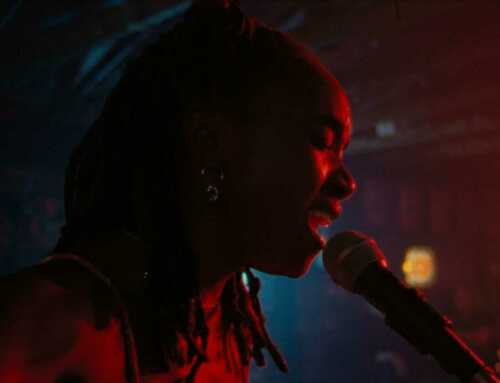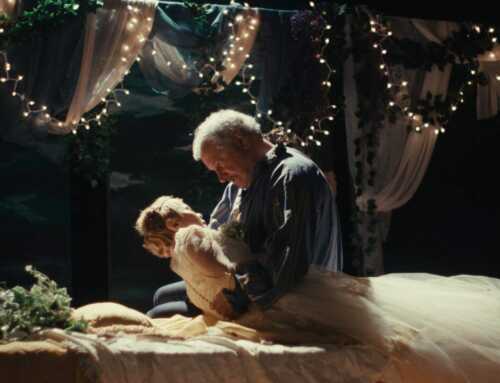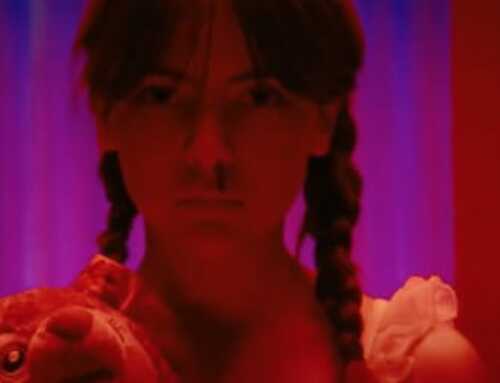Friend of the World is attention-grabbing and engaging but loses steam quickly due to story ambiguity and spasmodic dialogue. After viewing the opening credits the first words to pop into my head were “beautiful” and “chaotic”. This thought was quickly matched with the first line of the film, “The world is a beautiful chaotic mess”. The credits were unconventional but worked together in a pleasantly unexpected way, which gave me high hopes for the remainder of the film. Unfortunately, from that point on things were less beautiful and more chaotic.
Friend of the World takes place in a post-apocalyptic setting after a catastrophic war. An eccentric general Gore (Nick Young) aids aspiring experimental filmmaker Diane (Alexandra Slade) and guides her through a ravaged bunker. As the two interact details are revealed about the world’s current state, they meet some interesting characters along the way, and gruesome realities are realized.
There were several styling choices Friend of the World presented that I was quite fond of. Using chapters to break up the film was a bold choice that gave Tarantino vibes and I loved it. Choosing to present the film almost entirely in black and white was another favorable choice for this film. It simplifies the chaos that is happening in the film and leaves you focused on the conflict between the characters without other distractions. It also creates a dreary foreboding atmosphere that leaves you longing for the world that once was, a world of colorful, beautiful, chaos.
Outside of the aesthetic, things fell apart for me. The characters themselves were fun to watch individually. Slade and Young did a great job breathing life into their characters, making them rich with backstory and very three-dimensional. However, the dialogue between the characters was unimpressive, fragmented, and felt like a clash of words rather than a reactional conversation. There are experimental/avant-garde aspects to this film and I applaud writer/director Brian Patrick Butler for making bold cinematographic choices. However, I think the message and art of some of these sequences are lost due to the lack of continuity within the story.
Several details were not fully fleshed out as the story progressed. It remained unclear to me whether or not the apocalyptic situation was manmade, political, socioeconomic, zombie driven, or some combination of all of the above. Reasons for the characters’ motivations, current and locations seemed ambiguous and I was left filling in a lot of blanks. Story inconsistencies were present which makes it difficult for actors to adequately tell the story and quite frankly it frustrates the audience.
My favorite aspect of Friend of the World is that the pre-apocalyptic sequences are all in color. The only memory or proof of life before the apocalypse is visually different than the current situation and I love that message. It is warm and inviting and so different from the apocalyptic world these characters find themselves in. That juxtaposition sends a message that rings painfully true with humanity right now, making the film more relevant than ever.
Overall Friend of the World has a lot of visually pleasing elements to it, making it a 58-minute art piece. But art was all I got out of the film. Characters and storylines were buried under the rubble of the apocalypse this film finds itself in. It was definitely beautiful, but it was also definitely chaotic. Too chaotic.
Movie Rating: 3 out of 10
| Friend of the World | ||
| RATING: | UR | |
| Runtime: | 58 Mins. | |
| Directed By: |
|
|
| Written By: | ||







